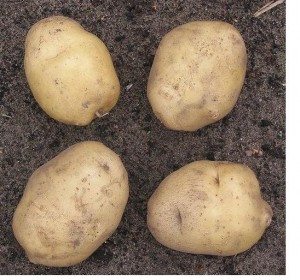SUNDAY, 31 JULY 2011
 Despite the potato being one of the world’s most important non-grain food crops and vital for global food security, progress with sequencing of its genome has been hampered by its genetic complexity. Potatoes are extremely heterozygous autotetraploids, meaning they possess four copies of each gene with considerable variation between each copy.
Despite the potato being one of the world’s most important non-grain food crops and vital for global food security, progress with sequencing of its genome has been hampered by its genetic complexity. Potatoes are extremely heterozygous autotetraploids, meaning they possess four copies of each gene with considerable variation between each copy.Scientists circumnavigated this problem by creating a plant with two identical copies of the genome – a double monoploid. Using this for initial sequencing they were subsequently able to sequence most of the genome of a more heterozygous specimen which more closely resembles the common potato. The comparison of the two genomes provides much needed insight into the evolution and biodiversity of the potato plant.
Most importantly however was that out of 39,000 genes encoding proteins, over 800 disease-resistance genes were identified [1]. With £2.6 billion globally being lost each year due to diseases such as potato blight - famous for causing the 1840s famine in Ireland - the research will provide scope for better breeding of this notoriously inbred species with wild varietals.
Written by Nicola Steed
